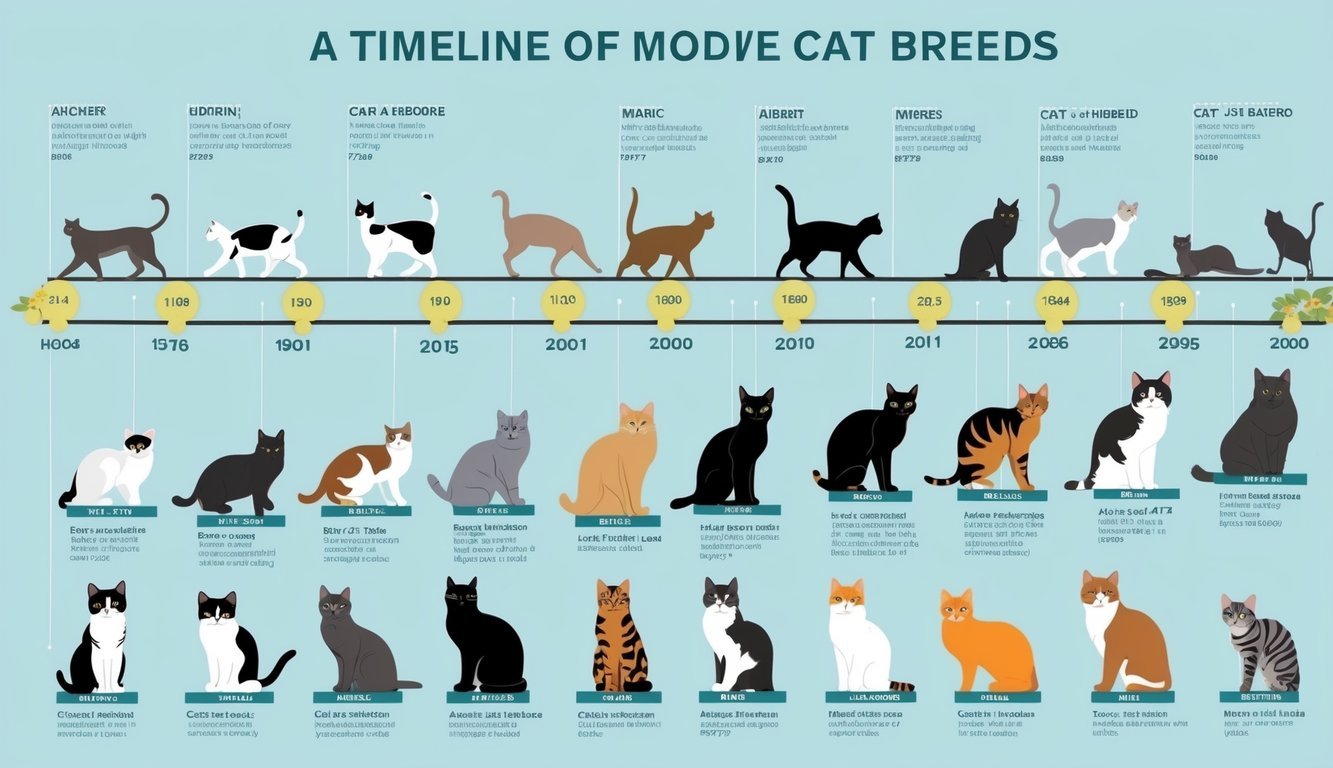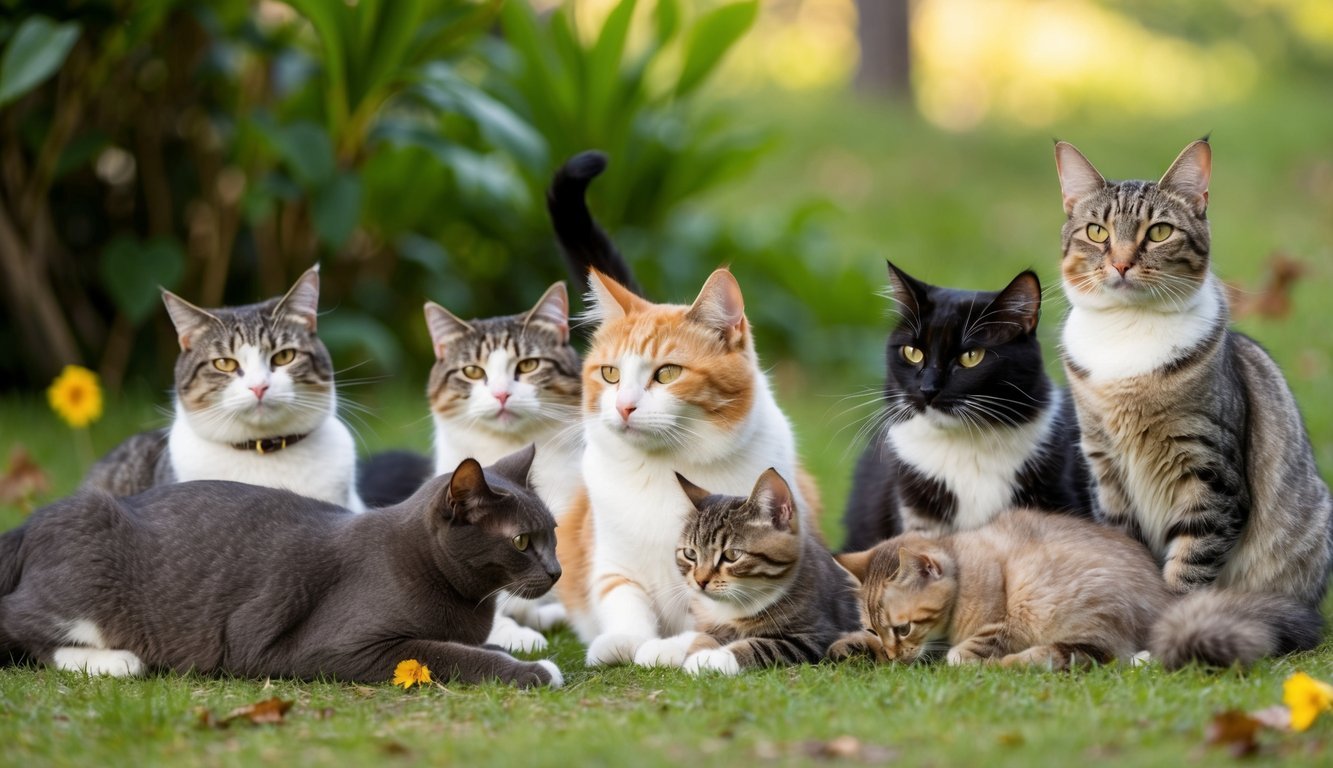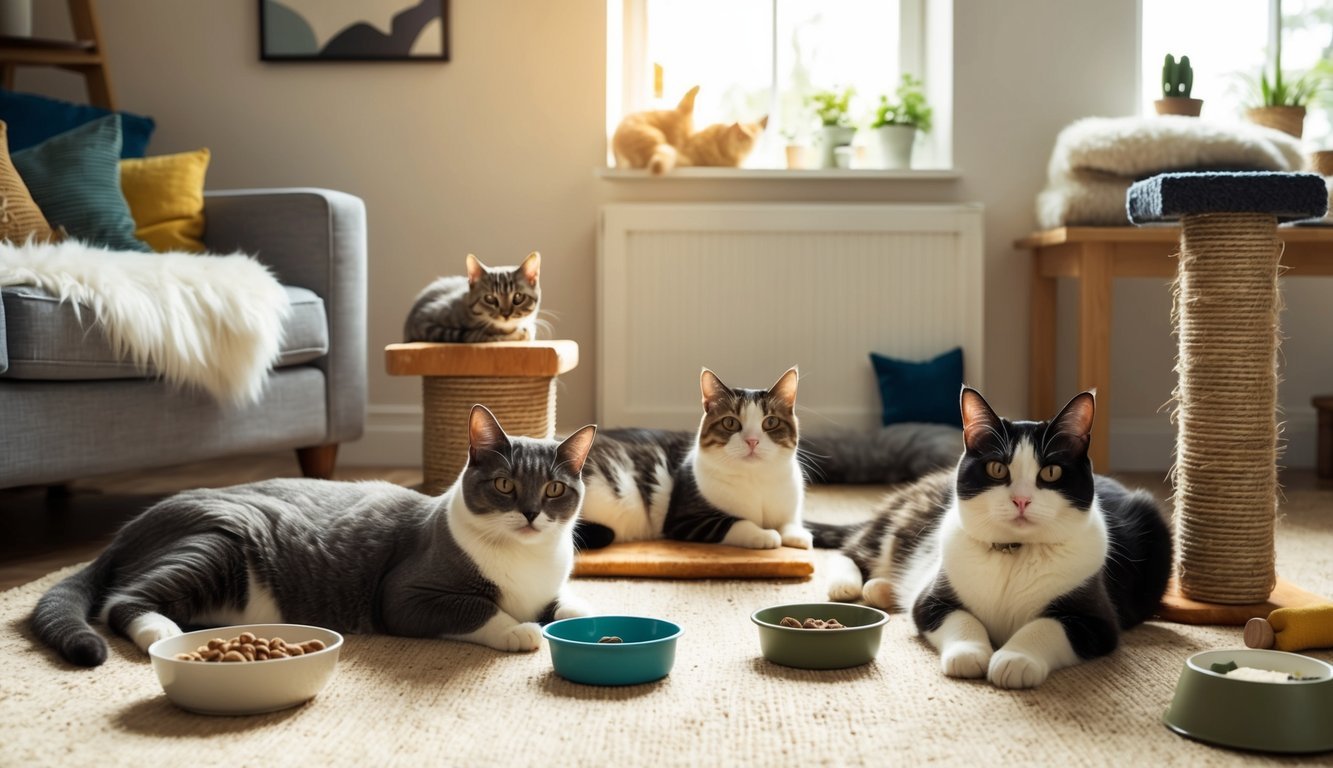PsychNewsDaily Publishers
100 Summit Drive
Burlington, MA, 01803
Telephone: (320) 349-2484
PsychNewsDaily Publishers
100 Summit Drive
Burlington, MA, 01803
Telephone: (320) 349-2484
Cats exhibit a wide range of breeds, each characterized by unique traits, personalities, grooming needs, and health considerations, influencing their suitability as pets.

Cats come in a variety of breeds, each with unique traits and personalities. Understanding different cat breeds helps pet owners choose a feline that fits their lifestyle and preferences.
From playful Bengals to affectionate Ragdolls, each breed has specific characteristics that can make them a perfect companion.
In addition to personality, cats vary in appearance, energy levels, and care needs. Some breeds, like the Sphynx, are known for their distinct looks, while others may have special grooming requirements.
Exploring these details can give potential cat owners valuable insight into which breed might be the best match for their home.
With over 70 recognized cat breeds, there is a lot to discover. Whether someone is looking for a family-friendly pet or a more independent companion, knowing about different breeds opens up a world of possibilities for cat lovers everywhere.

The history and evolution of cats is fascinating, revealing how wildcats transformed into beloved domestic companions. This process includes the origins of domestic cats and the development of various purebred cat breeds.
Domestic cats trace their roots back to wildcats. Around 30 million years ago, the first feline-like mammals, known as Proailurus, emerged. Over time, these creatures evolved into species similar to today’s wildcats.
Genetic studies and archaeological evidence suggest that wildcats became domestic cats between 9,000 and 12,000 years ago, especially in regions like the Near East. As people settled and began farming, they valued cats for their hunting skills to control rodent populations.
Cats became socialized with humans, showing traits like friendliness and adaptability. This led to their acceptance into households, creating the bond that persists today.
The development of purebred cat breeds began in the mid-19th century. Early breeders focused on specific traits, creating diverse breeds.
Some well-known breeds include:
These breeds often originated from native populations in specific regions. Breeders aimed to maintain and enhance desirable traits, leading to the establishment of breed standards.
Today, there are many recognized purebred cat breeds, each with unique characteristics and histories. This ongoing evolution continues as breeders seek to balance beauty, health, and temperament.

There are many popular cat breeds, each with its own unique traits and personalities. Understanding these can help cat lovers choose the right companion for their home.
Some of the most popular cat breeds include:
These breeds provide a range of options for anyone looking to adopt a cat.
Each breed comes with its own personality traits that affect how they interact with people and other pets.
Understanding these traits helps potential owners find the right match for their lifestyle.

Cat breed registries play an important role in maintaining the purity and standards of various cat breeds. They ensure that breeders follow guidelines to promote healthy and well-defined breeds. Different organizations have different recognition standards for cat breeds.
Cat registries, like The International Cat Association (TICA) and the Cat Fanciers’ Association (CFA), help track and register purebred cats. They maintain detailed records of lineage, which is crucial for breeders.
For example, TICA recognizes 73 breeds, while CFA recognizes 45 breeds. Registries also set guidelines for breeding practices to ensure the health and well-being of cats, including the Abyssinian and American Shorthair breeds.
Breed recognition is essential for establishing standards that breeders and owners can follow. Each registry has specific criteria for recognizing a breed.
TICA and CFA ensure breeds meet these criteria based on traits like size, coat color, and temperament.
For instance, the Devon Rex is known for its curly coat and playful nature, making it a popular choice among cat lovers. These classifications help potential owners understand breed characteristics, which is vital for responsible pet ownership.

Cats can have varying health issues based on their breed, which can also impact their lifespan. Understanding these aspects helps owners make informed decisions about their pet’s care and well-being.
Different cat breeds have unique health concerns. For example:
Each breed’s physical traits can lead to specific health problems. Regular vet check-ups are essential for early detection and treatment.
This proactive approach is vital, as some health issues can shorten a cat’s lifespan. Indoor cats generally live longer than outdoor cats, often reaching ages between 13 and 17. Some can live over 20 years.
To help cats live longer, owners should focus on proper care and regular activities. Here are some tips:
Creating a stimulating environment is also important.
Cats enjoy scratching posts, climbing trees, and interactive toys. Mental and physical stimulation can enhance a cat’s quality of life. Following these tips helps ensure that a cat stays healthy and happy throughout its life.

Different cat breeds have unique needs when it comes to grooming and diet. Understanding these needs helps ensure a happy and healthy pet.
Grooming varies by breed and coat type.
Long-haired cats, like Persians and Maine Coons, require regular brushing to prevent matting. Brushing them at least three times a week is ideal.
Short-haired cats, such as British Shorthairs, need less frequent grooming, about once a week.
Sphynx cats have minimal fur but still need bathing every few weeks to remove excess oils.
Here’s a quick list of grooming needs:
Some cats may also need nail trimming and ear cleaning to maintain hygiene. Keeping up with these grooming tasks will help keep cats comfortable and healthy.
Diet and exercise are crucial for a cat’s well-being.
High-energy breeds like Bengals and Abyssinians often require more playtime and interactive toys. Daily activity prevents boredom and can help reduce behavioral issues.
Feeding cats a balanced diet tailored to their age, size, and health conditions is important.
For instance, kittens need high-protein food to support growth, while older cats may require specialized diets for kidney health.
Here’s a basic guideline for feeding:
Regular play sessions, along with scheduled feeding, help keep cats in shape. Keeping fit supports a cat’s temperament and overall health.

Many cat lovers have questions about different breeds. Here are answers to some common queries about popular and friendly cats, prices, and more.
Some of the most popular cat breeds include the Persian, Maine Coon, Ragdoll, and Bengal. Each breed has unique traits that attract cat owners.
The Ragdoll cat is often regarded as one of the friendliest breeds. They are known for their calm demeanor and love of human companionship.
Certain purebred cats, like the Savannah cat, can cost up to $2000 or more. Their unique looks and personality contribute to their high price.
There are many resources available online that feature lists of cat breeds with pictures. These can help potential owners see what different breeds look like.
The top 10 cat breeds often include Ragdoll, Exotic Shorthair, British Shorthair, and Maine Coon. These breeds are loved for their temperaments and appearance.
The Ragdoll breed frequently holds the title of number one in popularity among cat breeds. Many families love them because of their affectionate nature.